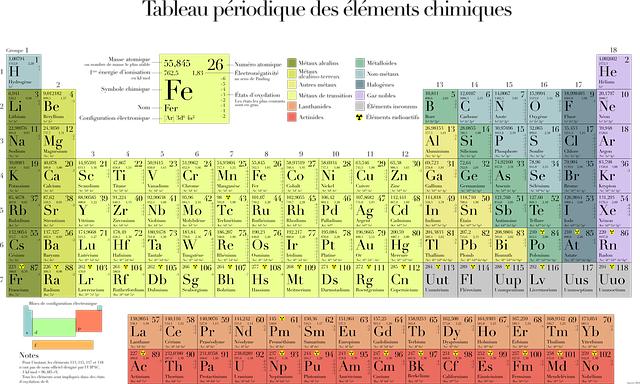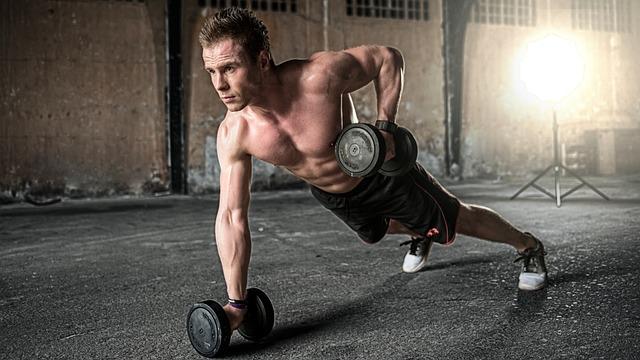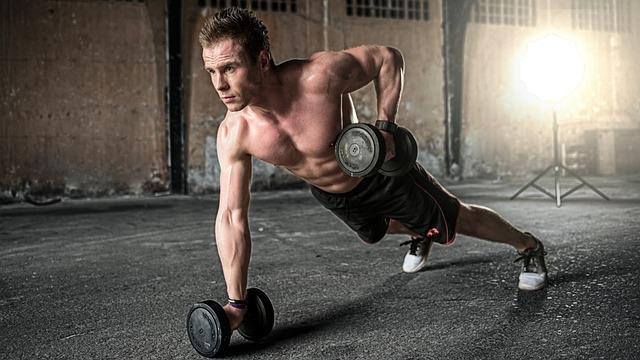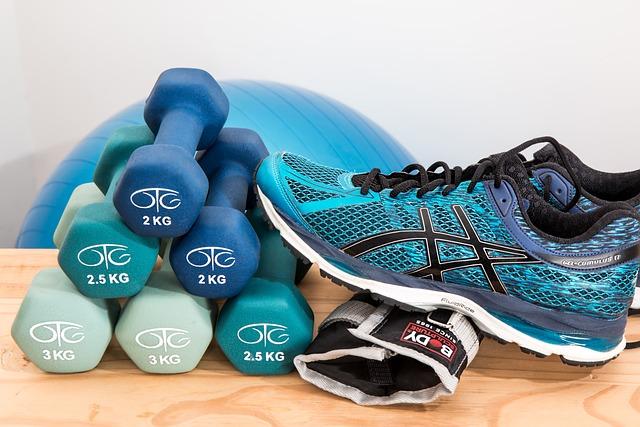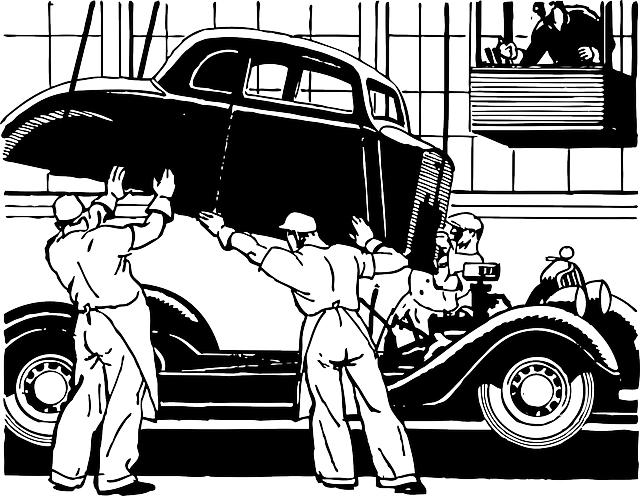Can You Train Hypertrophy and Strength at the Same Time? Fitness Strategies

Welcome to the world of fitness strategies! In this informative article, we’ll uncover the question that has been on the minds of many fitness enthusiasts: can you train hypertrophy and strength simultaneously? If you’ve been wondering whether it’s possible to build muscle size and enhance strength without compromising one or the other, you’re in the right place. Prepare yourself for a journey of knowledge and discovery as we delve into the secrets of training for hypertrophy and strength at the same time. So, grab a cup of your favorite beverage, sit back, and let’s unlock the keys to achieving your fitness goals with confidence and clarity.
Contents
- 1. Understanding the Science Behind Hypertrophy and Strength Training
- 2. Balancing Training Variables for Optimal Hypertrophy and Strength Gains
- 3. Utilizing Progressive Overload for Simultaneous Hypertrophy and Strength Development
- 4. Crafting a Well-Structured Training Program to Maximize Results
- 5. Incorporating Compound Movements to Stimulate Muscular Hypertrophy and Strength
- 6. The Importance of Periodization in Training for Hypertrophy and Strength
- 7. Exploring Different Training Methods to Target Hypertrophy and Strength Simultaneously
- 8. Managing Recovery and Nutrition for Enhanced Hypertrophy and Strength Adaptations
- 9. Individualizing Training Approaches for Hypertrophy and Strength Goals
- 10. Monitoring and Tracking Progress to Continuously Adjust Training Strategies
1. Understanding the Science Behind Hypertrophy and Strength Training
When it comes to fitness goals, many people have the desire to build muscle (hypertrophy) and gain strength. It’s a common misconception that these two goals are mutually exclusive, and that you have to choose one over the other. However, the truth is that with the right training strategies, you can train for both hypertrophy and strength simultaneously.
One key factor in achieving both hypertrophy and strength gains is understanding the science behind these processes. Hypertrophy refers to the increase in the size of muscle fibers, while strength training focuses on improving the ability to generate force. To effectively train for both, it’s important to target different muscle fibers and incorporate a variety of exercises that challenge both muscle size and strength.
One strategy to achieve this dual goal is to incorporate compound exercises into your training routine. Compound exercises engage multiple muscle groups simultaneously, allowing you to lift heavier weights and generate more force. Examples of compound exercises include squats, deadlifts, and bench presses. These exercises not only help to build muscle but also promote increases in strength.
In addition to compound exercises, it’s also beneficial to include isolation exercises in your training routine. Isolation exercises target specific muscle groups and can help to further enhance muscle hypertrophy. Examples of isolation exercises include bicep curls, tricep extensions, and calf raises. By incorporating both compound and isolation exercises into your routine, you can effectively train for both hypertrophy and strength.
Key Takeaways:
- Hypertrophy and strength training are not mutually exclusive and can be achieved simultaneously
- Understanding the science behind hypertrophy and strength is crucial
- Incorporate compound exercises (e.g., squats, deadlifts) to target multiple muscle groups and increase strength
- Include isolation exercises (e.g., bicep curls, tricep extensions) to target specific muscle groups and promote hypertrophy
2. Balancing Training Variables for Optimal Hypertrophy and Strength Gains
In order to achieve optimal hypertrophy and strength gains, it is important to understand how to balance training variables effectively. Many people wonder if it is possible to train for both hypertrophy and strength at the same time, and the answer is yes! With the right fitness strategies, you can work towards both goals simultaneously.
One key factor to consider is the overall volume of your training. In order to stimulate muscle growth, you need to perform enough sets and repetitions to create a stimulus for hypertrophy. On the other hand, strength gains are often achieved through lower rep ranges and heavier weights. Finding the balance between these two can be a challenge, but it is possible by implementing different training techniques.
Another important variable to consider is the frequency of your training. While some studies suggest that training a muscle group multiple times a week can lead to greater hypertrophy, others argue that allowing for adequate rest and recovery is equally important. Finding the right balance between training frequency and recovery is crucial for achieving both hypertrophy and strength gains.
In addition to volume and frequency, the selection of exercises can also impact your progress. By incorporating compound movements, such as squats, deadlifts, and bench presses, you can target multiple muscle groups at once, which can be beneficial when training for both hypertrophy and strength.
It is important to note that everyone’s abilities and goals are unique, so it may take some trial and error to find the perfect balance of training variables that works best for you. Remember to listen to your body, track your progress, and make adjustments as needed. With the right fitness strategies and a consistent training routine, you can effectively train for both hypertrophy and strength gains.
3. Utilizing Progressive Overload for Simultaneous Hypertrophy and Strength Development
Utilizing progressive overload is a key strategy for achieving both hypertrophy (muscle growth) and strength development simultaneously. By gradually increasing the demands placed on the muscles, you can stimulate continuous growth and enhance strength gains. Here are some effective ways to incorporate progressive overload into your training routine for optimal results:
-
Increase weight: One of the simplest ways to apply progressive overload is by gradually increasing the weight you lift. Start with a weight that challenges you but allows you to complete your desired number of reps with good form. As you get stronger, gradually increase the weight to continue challenging your muscles and promoting growth.
-
Add reps or sets: Another approach is to add more reps or sets to your exercises. By increasing the volume of your workout, you’re pushing your muscles to work harder and adapt to the greater demands. This can lead to increased muscle size and improved strength over time.
-
Decrease rest time: Shortening the rest periods between sets is an effective way to increase the intensity of your workouts. By giving your muscles less time to recover, you’re forcing them to adapt and grow stronger. This technique is particularly useful for hypertrophy-focused training, as it promotes muscle fatigue and metabolic stress.
- Vary exercises and techniques: Incorporating different exercises and techniques into your workouts can also help stimulate muscle growth and strength development. By challenging your muscles in new ways, you prevent them from plateauing and encourage continuous progress. Try incorporating supersets, drop sets, or different variations of the same exercise to keep your workouts fresh and effective.
Remember, progressive overload is about consistently pushing your limits and gradually increasing the demands on your muscles. It’s essential to listen to your body and allow for proper recovery between sessions to prevent overtraining. By implementing these strategies and staying consistent, you can achieve simultaneous hypertrophy and strength gains, taking your fitness to the next level.
4. Crafting a Well-Structured Training Program to Maximize Results
Crafting a well-structured training program that maximizes results requires careful consideration, especially when it comes to balancing hypertrophy and strength training. Many fitness enthusiasts often wonder if it’s possible to train both aspects simultaneously. The answer? Yes, it is!
To effectively achieve hypertrophy and strength gains at the same time, it’s essential to focus on specific strategies. Here are a few key points to consider when designing your training program:
-
Progressive Overload: Incorporating progressive overload techniques, such as increasing weight or volume over time, is crucial for both hypertrophy and strength gains. This ensures that your muscles are continuously challenged and stimulated for growth.
-
Variation in Rep Ranges: To optimize results, include a mix of lower rep ranges (3-8 reps) and higher rep ranges (8-12 reps) in your training program. Lower reps focus on strength development by recruiting more motor units, while higher reps target muscle hypertrophy.
-
Compound and Isolation Exercises: Utilize a combination of compound and isolation exercises to target multiple muscle groups effectively. Compound exercises, such as squats and deadlifts, activate multiple muscles simultaneously, promoting overall strength and muscle growth. Isolation exercises, like bicep curls or tricep extensions, allow for targeted muscle hypertrophy.
- Adequate Rest and Recovery: To ensure optimal progress and prevent overtraining, prioritize rest and recovery. This includes allowing sufficient time between training sessions, prioritizing quality sleep, and incorporating proper nutrition to fuel muscle growth and repair.
Incorporating these strategies into your training program will help you achieve a balance between hypertrophy and strength gains. Remember, consistency, patience, and listening to your body are key to maximizing results. So, go ahead, craft a program tailored to your goals and watch your fitness soar to new heights.
5. Incorporating Compound Movements to Stimulate Muscular Hypertrophy and Strength
Muscular hypertrophy and strength are often targeted separately in training programs, with different exercises and approaches recommended for each. However, recent research suggests that incorporating compound movements can effectively stimulate both hypertrophy and strength gains simultaneously. Compound movements are exercises that involve multiple joints and muscle groups, such as squats, deadlifts, and bench presses.
One of the main advantages of compound movements is their ability to recruit a larger number of muscle fibers compared to isolation exercises. This increased muscle fiber recruitment leads to greater muscular overload, which is an important stimulus for both hypertrophy and strength adaptations. Compound movements also require the coordination and activation of multiple muscle groups, which can enhance overall strength and functional movements.
To maximize the benefits of compound movements for hypertrophy and strength gains, it is important to focus on form and technique. Proper form ensures that the targeted muscles are being effectively engaged and that the load is distributed evenly across the body. Additionally, progressive overload should be applied by gradually increasing the weight or intensity of the compound movements over time. This can be achieved through adding more weight to the barbell or using resistance bands to increase tension.
Incorporating compound movements into your training program can be a game-changer for achieving both muscular hypertrophy and strength gains. By targeting multiple muscle groups and stimulating greater muscle fiber recruitment, compound movements provide a more efficient and effective way to reach your fitness goals. So, whether you’re looking to build muscle size or increase your strength, don’t underestimate the power of compound movements in your workouts.
6. The Importance of Periodization in Training for Hypertrophy and Strength
Periodization is a crucial component of any training program aiming to achieve both hypertrophy and strength. By strategically planning and varying the intensity, volume, and frequency of workouts, periodization optimizes the body’s response to training stimuli, leading to greater gains in muscle size and strength.
One popular approach to periodization is the linear periodization model. This model involves gradually increasing training volume and intensity over time, with each phase building on the previous one. The first phase typically focuses on higher repetitions and lower weights to improve muscular endurance. As the program progresses, the focus shifts towards heavier weights and lower repetitions to enhance strength and hypertrophy.
Another effective periodization strategy is the undulating periodization model. This approach involves constantly changing training variables, such as intensity and volume, within a given week or even within a single workout. This constant variation keeps the body guessing and prevents adaptation, which can result in plateaus. For example, one workout may emphasize heavy weights with low repetitions, while the next may focus on lighter weights and higher repetitions. This approach stimulates different muscle fibers and leads to greater overall muscular development.
Incorporating both approaches into your training program can yield remarkable results. By combining the progressive overload principle of linear periodization with the constant variation of undulating periodization, you’ll keep your body continuously challenged and promote optimal muscle growth and strength gains.
Overall, by understanding and implementing periodization in your training, it is possible to simultaneously improve hypertrophy and strength. Take the time to carefully plan your workouts, adapt to your body’s needs, and you’ll be well on your way to achieving your fitness goals.
7. Exploring Different Training Methods to Target Hypertrophy and Strength Simultaneously
When it comes to fitness goals, many people strive to increase both hypertrophy (muscle growth) and strength. The question is, can these two goals be achieved simultaneously? The answer is yes, with the right training methods and strategies. Here are some effective ways to target both hypertrophy and strength in your workouts:
-
Progressive overload: This is a key principle in strength training. By gradually increasing the weight, reps, or sets over time, you can stimulate muscle growth while also improving your strength. It’s important to constantly challenge your muscles to adapt and grow.
-
Compound exercises: These exercises involve multiple muscle groups and allow you to lift heavier weights. Squats, deadlifts, bench presses, and overhead presses are great examples of compound exercises that target both hypertrophy and strength. Incorporate these into your workout routine to maximize your gains.
-
High-intensity interval training (HIIT): This type of training involves alternating between intense bursts of exercise and short recovery periods. HIIT workouts can be beneficial for both hypertrophy and strength by promoting muscle endurance and increasing your overall fitness level.
- Periodization: This involves dividing your training into different phases, each with a specific focus. For example, you might have a phase dedicated to hypertrophy, followed by a phase focused on strength. This allows you to target each goal effectively while preventing plateaus and overtraining.
By combining these strategies, you can train for hypertrophy and strength simultaneously. Remember to prioritize proper form, nutrition, and recovery for optimal results. With dedication and consistency, you can achieve your fitness goals and transform your physique.
8. Managing Recovery and Nutrition for Enhanced Hypertrophy and Strength Adaptations
One common question that often arises in the fitness world is whether it is possible to simultaneously train for hypertrophy (muscle growth) and strength. Many individuals believe that these two goals are mutually exclusive and require different training approaches. However, with the right strategies and a balanced approach, it is indeed possible to optimize both hypertrophy and strength adaptations.
-
Managing Recovery:
- Adequate rest and recovery are essential for maximizing hypertrophy and strength gains. This includes ensuring sufficient sleep, implementing active recovery protocols such as light cardio or mobility work, and scheduling regular rest days.
- Prioritizing nutrition plays a crucial role in recovery. Consuming an adequate amount of high-quality protein, healthy fats, and carbohydrates will provide the necessary fuel for muscle repair and growth.
- Incorporating strategies such as foam rolling, stretching, and massage therapy can help reduce muscle soreness and promote faster recovery.
-
Nutrition for Enhanced Hypertrophy:
- Consuming a caloric surplus is often recommended for individuals aiming to maximize muscle growth. This means consuming more calories than your body needs to maintain its current weight.
- Focus on consuming nutrient-dense foods with a balanced macronutrient profile. Prioritize lean protein sources, such as chicken, fish, or tofu, as they provide the essential amino acids needed for muscle repair and growth.
- Carbohydrates are crucial for providing energy during intense training sessions. Opt for whole grains, fruits, and vegetables to ensure a steady supply of energy throughout the day.
- Nutrition for Enhanced Strength Adaptations:
- While hypertrophy and strength training share many similarities, strength-focused training may require a different nutritional approach.
- Prioritize protein intake to support muscular recovery and repair. Aim for 1.6 to 2.2 grams of protein per kilogram of body weight per day.
- Include an adequate amount of healthy fats, such as avocados, nuts, and olive oil, as they support hormone production and joint health, essential for strength training.
- Complex carbohydrates like sweet potatoes, quinoa, and brown rice can provide sustained energy for heavy lifting sessions.
In summary, integrating proper recovery strategies and following a well-balanced nutrition plan can help you train for both hypertrophy and strength simultaneously. By understanding the importance of rest, nutrition, and individual goals, you can create an effective training program that optimizes both muscle growth and strength adaptations.
9. Individualizing Training Approaches for Hypertrophy and Strength Goals
When it comes to training for both hypertrophy and strength goals, many people wonder if it’s possible to achieve both simultaneously. The simple answer is: yes, it is possible to train for hypertrophy and strength at the same time. However, the approach to achieving these goals may differ based on individual needs and preferences.
Here are some strategies to help you individualize your training approach:
- Vary your rep ranges: To optimize both hypertrophy and strength gains, it’s important to include a variety of rep ranges in your workouts. This means performing lower reps (1-6) with heavier weights to focus on strength, as well as higher reps (8-15) with moderate weights to stimulate hypertrophy.
- Manage your training volume: Finding the right balance between volume (total sets and reps) and intensity (weight used) is crucial for achieving both hypertrophy and strength. Adjusting your training volume based on your individual recovery ability is essential to avoid overtraining and promote optimal muscle growth and strength gains.
- Progressive overload: Incorporating progressive overload into your training routine is key to continually challenging your muscles and stimulating growth. This can be achieved by gradually increasing the weight you lift, the number of reps performed, or the intensity of your workouts over time.
Remember, individualizing your training approach is essential to effectively train for both hypertrophy and strength. Experiment with different strategies, listen to your body, and make adjustments as needed to ensure you’re making progress towards your goals.
10. Monitoring and Tracking Progress to Continuously Adjust Training Strategies
One of the key factors in achieving optimal results in your fitness journey is monitoring and tracking your progress. By consistently measuring and evaluating your performance, you can identify areas of improvement and make necessary adjustments to your training strategies. This allows you to tailor your workouts specifically to your individual needs, ensuring maximum effectiveness and efficiency.
Tracking your progress not only provides valuable insights into your overall fitness level, but it also helps you gauge the effectiveness of your training program. By keeping an eye on key metrics such as strength gains, endurance improvements, and body composition changes, you can adjust your training approach accordingly. For example, if you notice that your strength gains are plateauing while focusing on hypertrophy, you may consider incorporating more strength-specific exercises into your routine.
In addition to tracking your performance in the gym, it’s essential to monitor other aspects of your fitness journey, such as nutrition and recovery. Proper nutrition and adequate rest are crucial for muscle growth and overall well-being. By keeping a food diary and noting your energy levels, sleep quality, and recovery rate, you can identify any areas that may need improvement and make necessary adjustments to optimize your training results.
HTML example:
| Key Metrics | How to Track |
|---|---|
| Strength gains | Record your one-rep max for various exercises and track improvements over time. |
| Endurance improvements | Measure your time or distance for activities like running, cycling, or swimming and aim to beat your previous records. |
| Body composition changes | Use tools like calipers or bioelectrical impedance analysis to track changes in body fat percentage and muscle mass. |
Tracking your progress and making adjustments accordingly is a continuous process that allows you to fine-tune your training strategies. Remember, everyone’s fitness journey is unique, so what works for one person may not work for another. By being proactive and adaptable in your approach, you can optimize your training to simultaneously achieve hypertrophy and strength gains, bringing you closer to your fitness goals. In conclusion, the question of whether you can train hypertrophy and strength at the same time has been thoroughly explored in this article. Through careful examination of scientific research and analysis of different fitness strategies, it is evident that yes, it is indeed possible to achieve both hypertrophy and strength simultaneously. Whether you are an aspiring bodybuilder or simply looking to improve your overall fitness, incorporating a well-rounded training program that combines elements of both hypertrophy and strength training will help you attain your goals. By maintaining a balanced approach and utilizing effective techniques such as multi-joint exercises, progressive overload, and proper nutrition, you can maximize your gains and reach new heights in your fitness journey. So, remember, with the right knowledge, commitment, and dedication, the sky’s the limit when it comes to achieving hypertrophy and strength gains. Keep pushing yourself, stay motivated, and never underestimate the power of training both aspects of your fitness.





